Egypt
Welcome to Egypt: Your Complete Guide
Egypt on a Budget: A Practical Guide to Affordable Travel
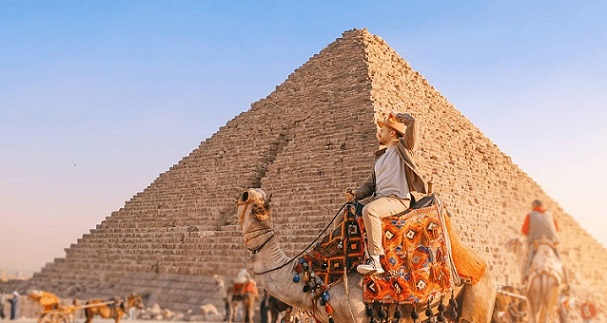
Yes, Egypt is absolutely a destination you can visit on a budget. While luxury options abound, the country remains exceptionally affordable for budget-conscious travelers, especially compared to many Western destinations.
Costs for food, local transportation, and numerous attractions are low. Success requires some planning and savvy to navigate tourist areas where opportunistic pricing exists.
1. Consider Tours for Structure & Value
Organized Tours: As noted, a packaged tour can lock in costs for accommodations, transfers, and key sites, preventing unexpected expenses. Always compare tour inclusions carefully. The £200 example is for a basic budget tour; prices vary by season and comfort level.
DIY Travel: Independent travel is also very possible on a budget. Use services like local trains, public buses, and ride-hailing apps (Uber/Careem work well in Cairo) for greater control.
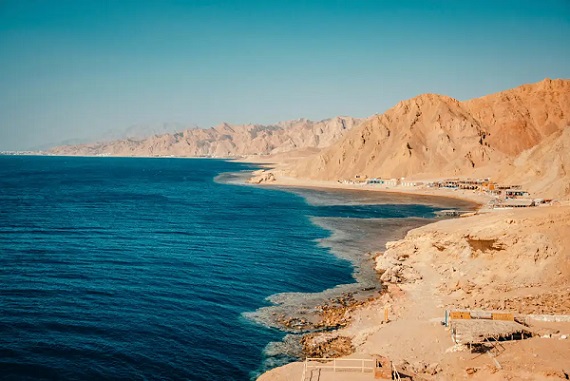
2. Master Local Transportation
Taxis & Ride-Hailing: Always agree on a price before getting in a non-metered taxi, or insist on using the meter. Uber/Careem are recommended for clear, upfront pricing and route tracking, avoiding unscheduled "shopping stops."
Overnight Trains: The overnight sleeper train (Watania) between Cairo, Luxor, and Aswan is a classic budget tip. Book well in advance. Note: It is more expensive than seated trains but includes a bed and meals. For the absolute lowest fare, standard seated or couchette trains are available.
3. Prioritize Your Sightseeing
Valley of the Kings: Research the 3 tombs included with your general ticket (these rotate). Tutankhamun’s tomb requires a separate ticket, pay only if you value the historical name, as its artifacts are in the Egyptian Museum in Cairo.
Sound & Light Shows: A matter of personal preference. They offer a dramatic atmosphere but add cost. Seeing the temples by daylight is non-negotiable for appreciation of detail. Philae Temple is only accessible by boat, which is an additional cost factored into any visit.
4. Eat Like a Local
Food is a major budget advantage. Local Egyptian food is incredibly cheap and delicious.
Eat at local eateries: Ful, koshari, taameya (falafel), and grilled chicken are widely available for a few dollars. A £5 meal is realistic.
Avoid Western food in tourist zones where it’s marked up significantly.
5. Seek Out Low-Cost Experiences
Feluccas: A sail on a traditional felucca in Luxor or Aswan is a highlight for little money. Negotiate the price and duration clearly before boarding.
Free Exploration: Wander through local markets (souks), explore areas like Islamic Cairo, or walk along the Corniche. The atmosphere is free.
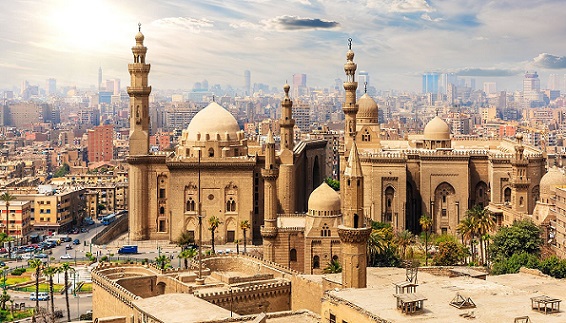
6. Be Smart with "Baksheesh" (Tips)
Baksheesh is a cultural norm for small services. Carry small change (5-10 EGP notes).
It’s for service rendered (someone guides you, carries bags, watches your shoes at a mosque). You are not obligated to tip everyone who asks, especially children. A polite but firm "la, shukran" (no, thank you) is acceptable.
7. Practical & Cultural Tips
Pens & Small Gifts: The advice about pens, while once very common, is now debated. Some see it as encouraging begging. A better approach is to support local communities by buying goods or donating to reputable local charities if you wish to contribute.
Hotel Breakfasts: Making the most of included breakfast is a universal budget tip. Most hotels will accommodate an early take-away option if requested politely in advance.
Budget Breakdown Snapshot (Per Day)
Budget Accommodation: £10 - £25 (hostel - basic hotel)
Local Meals: £5 - £10
Local Transport/Entry-level Tours: £10 - £30
Major Site Entrances: £10 - £20 (e.g., Giza Pyramids, major temples)
A realistic daily budget for a frugal traveler can be £30-£50, excluding international flights.
In Summary:
Egypt is a spectacular and accessible budget destination. The key is to plan major logistics, use fixed-price transport where possible, eat locally, and be selective with paid attractions. With these strategies, you can experience Egypt’s profound history and culture without overspending.

A Comprehensive Guide To The Pyramids Of Giza, Egypt
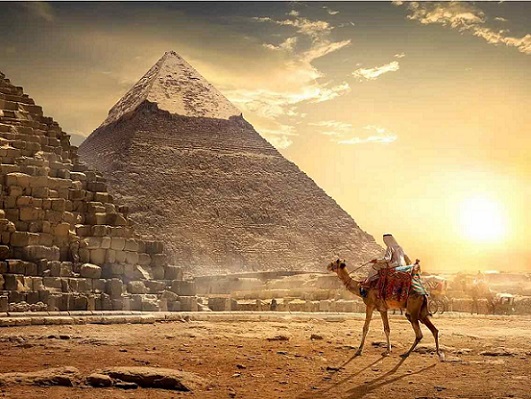
On the Nile River's western bank, the Giza Pyramids stand as Egypt's most famous ancient wonders. This site includes three unique pyramid complexes: the Great Pyramid of Giza (also known as the Pyramid of Khufu), the Pyramid of Khafre, and the Pyramid of Menkaure. Overseeing these magnificent structures is the Great Sphinx of Giza. Constructed by the pharaohs of the Fourth Dynasty, these pyramids have stood for over 4,500 years. They form part of the ancient Memphis necropolis, representing the extraordinary wealth, power, and architectural brilliance of the Ancient Egyptians. Discover ways to explore these pyramids with this detailed guide.
The Colossal Structure Referred To As The Great Pyramid Of Giza The Great Pyramid of Giza, towering as both the largest and oldest of the Giza pyramids, was constructed as a tomb and homage to Pharaoh Khufu, with its completion around 2560 B.C. Like the other pyramids, it consists of enormous blocks of granite and limestone, which were quarried, transported, and assembled with precision by hand. In total, around 2.3 million stone blocks were employed in its creation, originally coated with smooth, white limestone. According to the Greek historian Herodotus, this colossal endeavor required a workforce of 100,000 people and took 20 years to complete.
During its prime, the pyramid reached a height of 481 feet (146.5 meters) and held the title of the tallest human-made structure for over 3,800 years. The entry point is situated on the northern side and guides visitors through a network of passageways leading to the Queen's and King's chambers. The pyramid was accessed and plundered by pharaohs from the Middle and New Kingdoms, likely using its treasures to adorn their own graves in the Valley of the Kings near Luxor. In the Hellenistic period, the Great Pyramid was recognized as one of the Seven Wonders of the Ancient World. Despite being the most ancient of these wonders, it remains the only one still standing today.
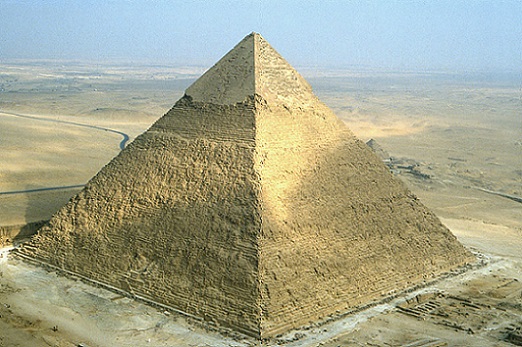
The Pyramid Of Khafre The Pyramid of Khafre, the second-highest among the Giza pyramids, was constructed as the resting place for Khufu’s son and heir. While the precise date of its completion remains uncertain, Khafre’s reign spanned from approximately 2558 to 2532 BC. A portion of the pyramid’s original limestone casing still adorns the summit, although much of it was stripped away throughout its history, notably during the Nineteenth Dynasty when Ramesses II repurposed the limestone for a temple in Heliopolis. This pyramid features two entrances that converge into a single burial chamber and an additional chamber, likely intended for storage.
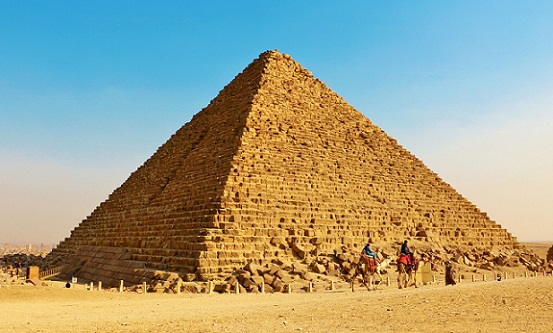
The Pyramid of Menkaure The Pyramid of Menkaure, the most modest and latest of the trio, was likely finished at the dawn of the 25th century B.C. Unlike its two counterparts, only the pyramid's upper section was clad in limestone, and some of the granite exterior remains incomplete. It's probable that Menkaure's passing interrupted its construction, leaving it unfinished. This pyramid features a solitary entrance that descends to an underground burial chamber. In the late 12th century, Sultan Al-Aziz Uthman attempted to dismantle the pyramids, and this was his initial target. Thankfully, the endeavor proved too challenging and was eventually abandoned, though the damage on the pyramid’s northern side still bears witness to this act of vandalism.
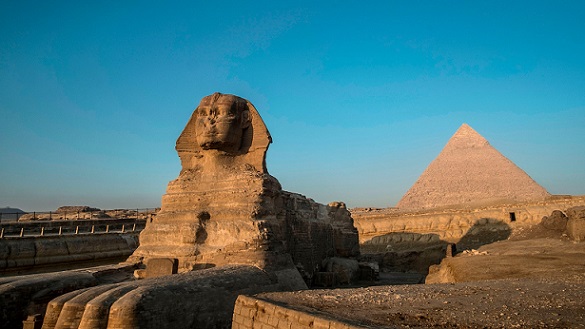
Great Sphinx of Giza The Great Sphinx of Giza is a legendary entity featuring the physique of a lion and the visage of a man. Scholars in Egyptology commonly concur that its countenance was sculpted to resemble Khafre, which is logical considering it originates from his era. This sculpture stands as the oldest monumental carving in Egypt, and its magnificence is amplified by the fact that it was hewn from a singular piece of the plateau's limestone bedrock. The varied density of the rock layers has led to faster erosion in the central section of the Sphinx's form, while numerous theories exist regarding the absence of its nose. It stretches 240 feet (73 meters) in length and rises to a height of 66 feet (20 meters).
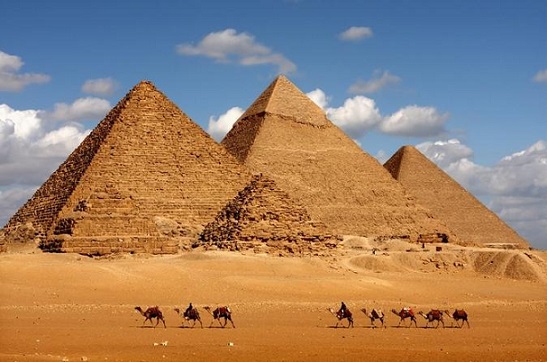
Contemporary Expeditions The pyramids of Giza have captivated explorers and researchers nearly since their construction. In the early 19th century, French archaeologist Auguste Mariette initiated clearance operations at the Giza site. Among the pioneering modern archaeologists to investigate the interiors of the pyramids were Giovanni Belzoni, John Perring, Richard Vyse, and Karl Richard Lepsius. In 1880, the British archaeologist Sir William Matthew Flinders Petrie journeyed to Giza to conduct the inaugural scientific survey of the pyramids. His precise drawings and measurements have significantly contributed to our current understanding of their construction methods.
Throughout the 20th and into the 21st century, excavations persisted. In 2010, Egyptian archaeologists unearthed a burial site for workers, providing evidence that the pyramids were constructed by compensated craftsmen rather than enslaved individuals. More recently, in May 2019, a new burial ground and sarcophagi were discovered, estimated to be over 4,500 years old. Back in 1979, the Pyramids of Giza, along with the rest of the Memphis necropolis, were recognized as a UNESCO World Heritage Site.
Attractions And Activities The primary attractions at Giza are the iconic trio of pyramids and the Sphinx, but there are numerous other sights to explore. Visitors can discover a collection of smaller, auxiliary pyramids, mastaba graves, and temples. Additionally, the remnants of the workers' settlement can be seen to the southeast of the Khafre and Menkaure pyramids, alongside the Solar Boat Museum. This museum houses a vessel unearthed at the foot of the Great Pyramid, meticulously reassembled by specialists over 14 years. Staying past sunset offers the chance to witness the pyramids illuminated during the nightly Sound & Light Show.
Standard tickets include a tour of one of the Queen of Cheops' satellite pyramids. For those interested in exploring the interiors of the three major pyramids, an additional ticket is required. Although the mummies and their treasures have been removed—either by robbers or to the safety of the Egyptian Museum—stepping inside these ancient structures is a unique experience for many, though those who are claustrophobic might want to avoid it. It's important to note that climbing the pyramids is prohibited.
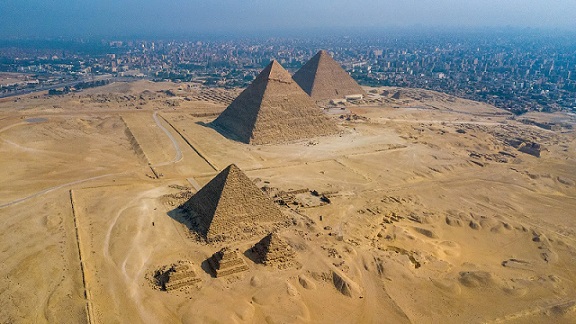
Suggestions For Your Trip Some individuals opt to participate in a guided tour. Advantages include hotel pick-up, transportation from Cairo, included admission fees, and an English-speaking Egyptologist guide. However, you will be traveling with a large group during peak visiting times at the pyramids. Alternatively, exploring the pyramids on your own is quite straightforward. Rides from central Cairo via taxi or Uber are about an hour away, depending on traffic, and are surprisingly budget-friendly. Additionally, public buses run from outside the Egyptian Museum to the pyramids.
Upon arrival, you have the option to explore the site on foot or to rent a camel or horse. Many visitors prefer the latter to journey into the desert for a sweeping view of the pyramids, though it's important to note that some of these animals suffer from poor treatment and lack of food. The most spectacular vistas can be seen from the dunes located behind the Pyramid of Menkaure, where you can admire all three pyramids contrasted against the distant, contemporary skyline of Cairo. Essential items for your Giza expedition include durable footwear, sufficient sun protection, and an adequate supply of water.
To steer clear of the crowds, consider planning your visit later in the day, after the bulk of tour buses have departed (most arrive between 9:30 a.m. and 10:30 a.m.).
The official Egyptian tourism site states that the location is open to visitors from 9 a.m. to 5 p.m. daily. Admission fees are outlined as follows: general entry costs 60 Egyptian pounds, access to the Great Pyramid is 100 Egyptian pounds, tickets for the Pyramid of Khafre are 30 Egyptian pounds, and entry to the Pyramid of Menkaure is priced at 25 Egyptian pounds. The Sound & Light Show is available for US$15, and reservations should be made ahead of time.

Nile Cruise In the Footpath Of The Pharaohs
Egypt is where history first emerged. It is here that we have the first pictographic record of events and persons. Hieroglyphics, the system of writing used by ancient Egyptians can be traced back to about 3200 BC. At about 3180 BC, the nations of Upper and Lower Egypt were brought under the rule of a single king titled Pharaoh. The first Pharaoh is thought to have been Menes, who set his capital at Memphis, 22 km south of Giza in today's Cairo. The Pharaohs established the systems that brought forth the highly successful Egyptian civilization. The history of Ancient Egypt lasted for about 3,000 years. Ancient Egypt declined, was overrun and thereafter ruled by foreign powers. The Greeks and Romans who ruled after the decline were aware of the great similarity between their own gods and those of the Egyptians. They not only tolerated Egyptian religion, but also expanded existing temples and dedicated new ones to existing cults.
Egypt Luxor
Some of the new overlords, Alexander the Great for example, styled themselves as divine priest-kings in imitation of the Pharaohs. Emperor Theodosius, who reigned after Christianity became the state religion in Rome, extinguished the last remnants of the living culture. The Egyptians worshiped hundreds of gods - a great offense against the monotheistic religions; whose first article of faith is that there is only one God. Theodosius decreed in AD 391 that all pagan temples in the Roman Empire be closed. The Arabs, who brought Islam to Egypt in 640 AD, also had no time for deities such as Anubis the jackal, Horus the falcon god or even Amon the king of the gods.
Ancient Egypt was dead for one thousand five hundred years, until the French came across the Rosetta Stone in the nineteenth century invasion of Egypt by Napoleon. This priceless discovery was inscribed in both Greek and Egyptian, and it was the key that allowed the deciphering of Hieroglyphics by Jean-Francois Champollion in 1822. The voluminous literature produced by Ancient Egyptians was now accessible to curious scholars. This rekindled great interest in Ancient Egypt in the West that remains undiminished to this day. Religion is the common theme running through the attractions of ancient Egypt.
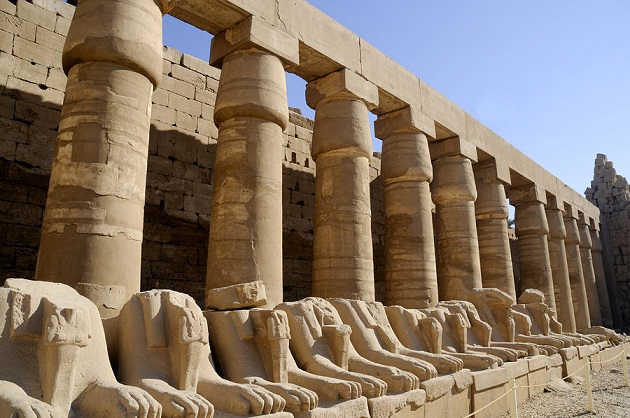
Egypt Karnak Temple
The diversity of gods found worthy of worship is astounding. There were over 2,000 of them of either sex and they supposedly manifested themselves to earthlings as animals. There were overlaps and the same gods could be known with different names in various parts of the country. There was hardly any part of the life experience that was not assigned a deity- digestion, mummification, sexuality, feasting, childbirth, writing - you name it. Some gods came and went out of fashion, but those connected with basic aspects of life were enduring. Such deities had cults and temples dedicated to them. The afterlife was taken very seriously, and a lot of the monuments relate to preparation for that glorious time. Mortuary and burial preparation was so elaborate as to ensure a painless and enjoyable afterlife. The custom of mummification, for example, was seen as necessary for the soul needed a physical body to occupy in the other world. There was however great inequality in preparation for eternal life.

The Pharaohs and other royals, nobles and key officials were mummified and accompanied by grave goods and great treasure. The common folk who could not afford the full treatment had to do with statuettes of mummies. The main draw to Egypt is the legacy of the Pharaohs and the Greeks and Romans who ruled after them. Basically this legacy is associated with temples, tombs and burial places. People in Egypt from the earliest times to present have always lived along the River Nile and this is where you find the richest harvest of ancient monuments. As many travelers will testify, the best way to experience classical Egypt is by taking a Nile cruise. The cruise is a very pleasant and relaxing way to get close to the attractions of antiquity, most of which are not far off from the banks of the river. You also get a glimpse of rural Egypt where many eke out a living just as their forebears did thousands of years ago.
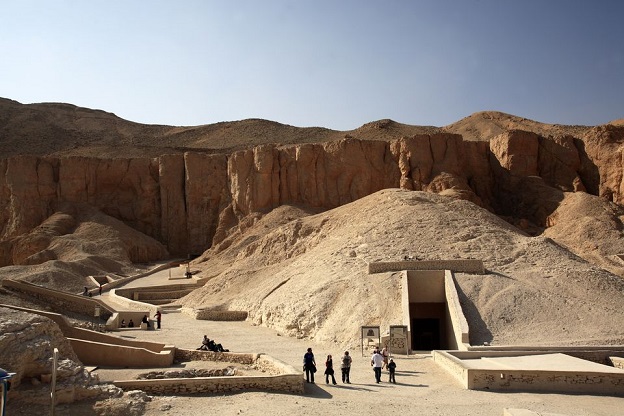
Egypt Valley Of The Kings
The typical Nile cruiser is really a floating hotel. Amenities on board will include lounges, restaurants, bars, swimming pool, discotheque and shops. The rooms are rather smaller than those of a land based hotels but will have air conditioning, TV and enough room for twin beds, private shower, nightstand and dresser. The quality of cruisers varies and they are graded with stars just like hotels. Top end cruisers have spacious suites and amenities almost equal to those of ocean cruisers. Generally, the quality and romance of Nile cruisers surpasses other riverboats anywhere else in the world.
Nile cruises normally take three, four or seven nights. You will be able to see the most important and interesting monuments on the shorter and more popular cruises that ply between Luxor and Aswan. The longer sail takes you up to Dendera. The boats sail both downstream and upstream and on the shorter cruises, you can embark at either Aswan or Luxor. The more adventurous travelers or those on a tight budget avoid the luxury cruisers in favour of fellucas- the traditional Nile sailboats. Though amenities on board fellucas are very basic, those who can survive them, visit all the attractions along the Nile at a fraction of the cost of the cruisers. At Aswan, the Nile is deep, calm and is at its most glorious. It is a good place to embark on your Nile cruise.
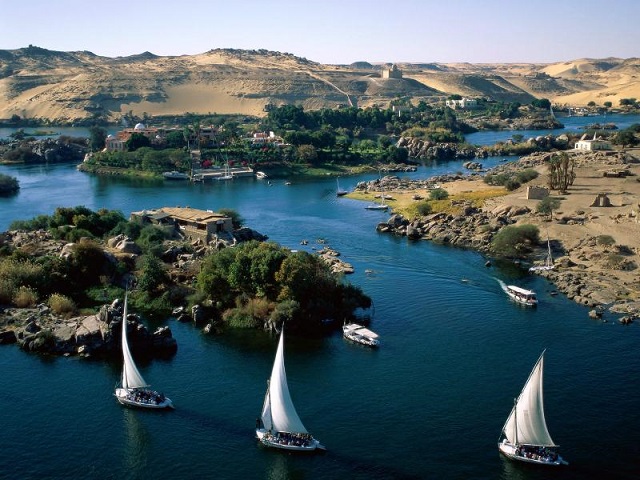
Nile River Cruises
Aswan was for long Egypt's southern frontier city and its gateway to Africa. This was the region known as Upper Egypt, being upstream of the Nile. After Aswan, the Nile passes through a section of hard rock, resulting in rapids or cataracts. Thus by nature did Aswan attain its strategic position and it has served as a garrison town for those who have ruled Egypt over the centuries. And for this reason, there are monuments here associated with the Pharaohs, Greeks, Romans, Christian Copts and Islam. At Aswan, make sure to visit the Philae Temple. Ptolemy II started the temple when the Greeks ruled, and the Romans completed it. It was dedicated to the goddess Isis, an important figure in Egyptian mythology that was worshipped across the Roman Empire. Even after Emperor Theodosius ordered all pagan temples to cease operations, Isis was still being glorified at Philae, until about AD 550 when Emperor Justinian finally shut down the temple. The early Christians converted the temple's hypostyle hall into a chapel.
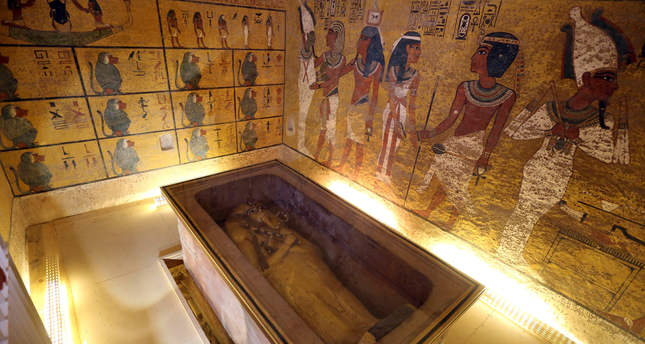
Golden Sarcophagus Of Tutankhamun
For good measure, they defaced some of the pagan reliefs adorning its walls. The temple forms an excellent backdrop for the nightly sound-and-light show. The temple was nearly lost after the Aswan High Dam was commissioned in the 1960's. It took UNESCO and the Egyptian government ten years to move it, one stone at a time, to higher ground on Agilka Island. Most people also visit Elephantine Island, which has temples and a museum. The Island has been inhabited since about 3000 BC and was an important trading and cultural center. Aswan is home of the Nubians, a dark skinned people, related to the people of the north of the Sudan. You can see some Nubian villages at Elephantine Island. The Nubian museum celebrates Nubian culture right from prehistoric times. Aswan was once an important centre for Christian Copts. You can see the ruins of the once majestic Monastery of St Simeon, which was destroyed by the conqueror Saladin (Salah ad-Din) in 1173 AD.
Aswan was the source of the granite stone that the Pharaohs favored for building temples and other monuments. The Northern Quarries are the site of the giant Unfinished Obelisk. Had the obelisk been successfully completed, it would be the single heaviest piece of monolithic stonework -reaching about 42 m and weighing over 1168 tonnes. It must have broken the hearts of the builders, who supposedly abandoned it, after coming across defects in the rock formation. The next stop on the cruise is Kom Ombo, 48 km to the north of Aswan. The main attraction here is the Graeco-Roman temple. Work on the temple was started by Ptolemy VII in early second century BC and continued by some of his successors. The Romans Emperor Augustus built part of the temple at around 30 BC. The Temple of Kom Ombo actually consists of two separate temples, each with its own entrance, colonnades, hypostyle hall and sanctuary. The southern temple is dedicated to Sobek -the crocodile god, while the northern one honors Horus -the falcon god.
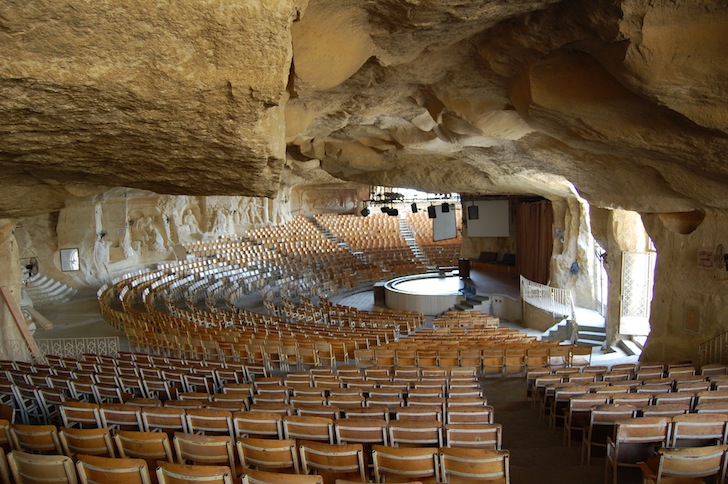
Cave Church Cairo
Though the two gods shared the same grounds, in mythology, Sobek was associated with the god Seth, an enemy of Horus. At Kom Ombo, the gods took the liberty to bring along family - Sobek sneaked in his consort Hathor and son Khonsu, while Horus had his wife Tesentnefert and son, Panebtawy. If you have not seen mummies before, be sure to see the mummified crocodiles in the Sobek part of the temple. At Edfu, you disembark to see the Temple of Horus. Edfu was the cult centre of Horus the falcon god. It is perhaps the best preserved of ancient temples of Egypt. The temple standing today was started by Ptolemy III at about 237 BC on the site of an earlier Pharaonic structure. Work continued under some of the Ptolemies that followed. Appropriately, the entrance adorned by two majestic granite falcons. The walls bear reliefs depicting Horus. One scene would please any tyrant -it shows Ptolemy XII dealing mercilessly with his enemies.
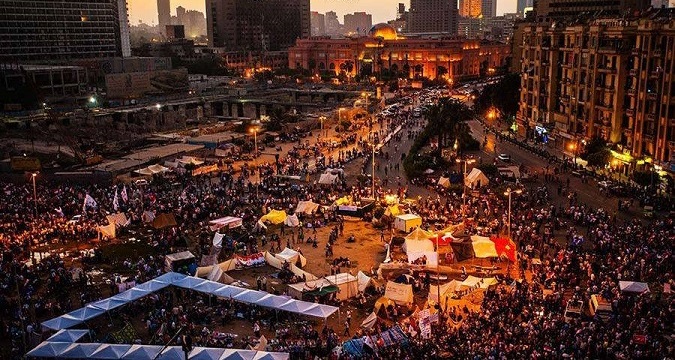
Egypt Al Tahrir Square Cairo
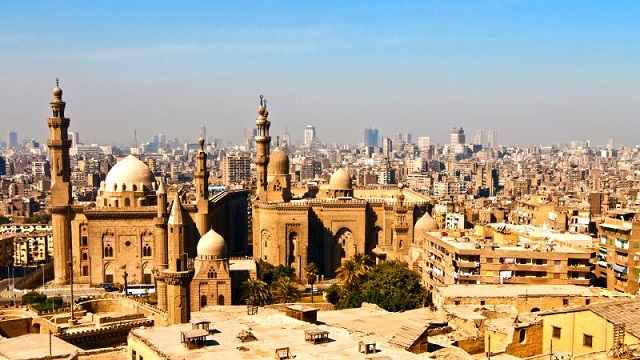
City Of Cairo Egypt
You next stop and highlight of the cruise is Luxor. The range, magnificence and diversity of the monuments in the Luxor area is unsurpassed in all of Egypt. Known to the Greeks as Thebes, Luxor became the capital of Egypt at around 2040 BC. The city survived the sacking by the Assyrians in the 7th century BC, but steadily declined, and was finally destroyed by the Romans in the first century BC. Among the celebrated monuments dating from Luxor's heydays are the necropolis complexes at the Valley of the Kings, Valley of the Queens and Tombs of the Nobles. You will also come across some outstanding temples scattered in the region. The Egyptians buried their dead in the direction of the setting sun and the west bank at Luxor was the final resting place of royalty and high officials. The Valley of Kings is where the rulers of the period historians refer to as the New Kingdom period (BC 1550-1070) awaited the afterlife.
The Pharaoh normally picked the spot for his tomb and had it built in his lifetime. Tomb building for royalty and high officials was very serious business and it supported a battery of architects and craftsmen, who had a settlement in the valley. The valley contains over 60 tombs that have so far been excavated. The tombs have suffered in recent years due to increased number of visitors, pollution and the rising ground water that has come with the Aswan High Dam. For this reason, not all of them are open to the public at any one time. Unless you are a scholar, visiting three or four tombs should be sufficient.
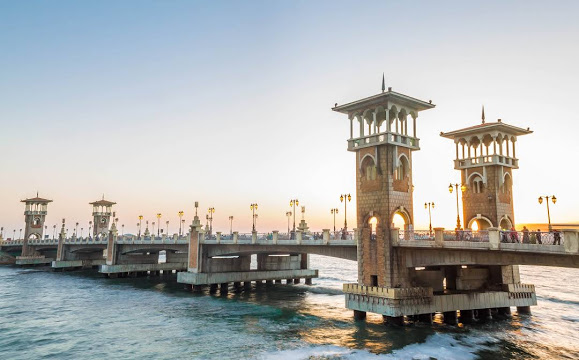
Alexandria Egypt
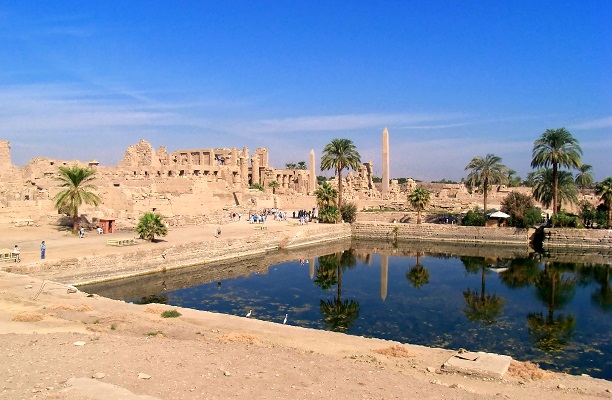
Egypt Sacred Lake Karnak
Among the best tombs are those of Ramses I, Tuthmosis III and Ramses VI. Tutankhamun's is today the most famous - though he is not considered a significant Pharaoh and he died at only nineteen. Treasure hunters had over the years looted most tombs in the valley. But Howard Carter, the British archeologist, discovered Tutankhamun's tomb almost intact in 1922. The treasure that was found here is truly amazing- statues, chests, chariots, beds, weapons, and many items he needed for the afterlife. The main item today at Tutankhamun's tomb is his mummy. About 1700 items recovered at the tomb are now at display at the Egyptian Museum in Cairo. The most outstanding of the collection is the 11 kg solid gold death mask. Imagine then, what the looters carried off from the bigger tombs of the more illustrious Pharaohs! On the other side of the Valley of Kings is the Temple of Deir el-Bahri, built by Queen Hatshepsut.
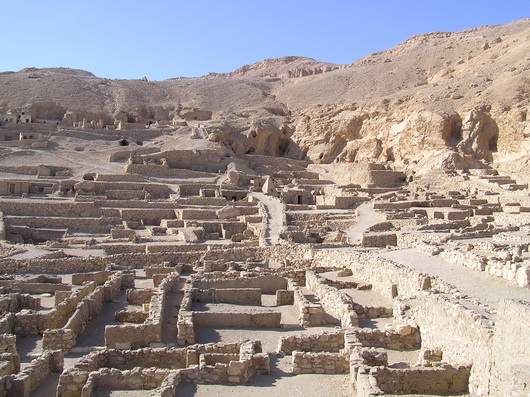
Valley Of The Queens Built By Queen Hatshepsut
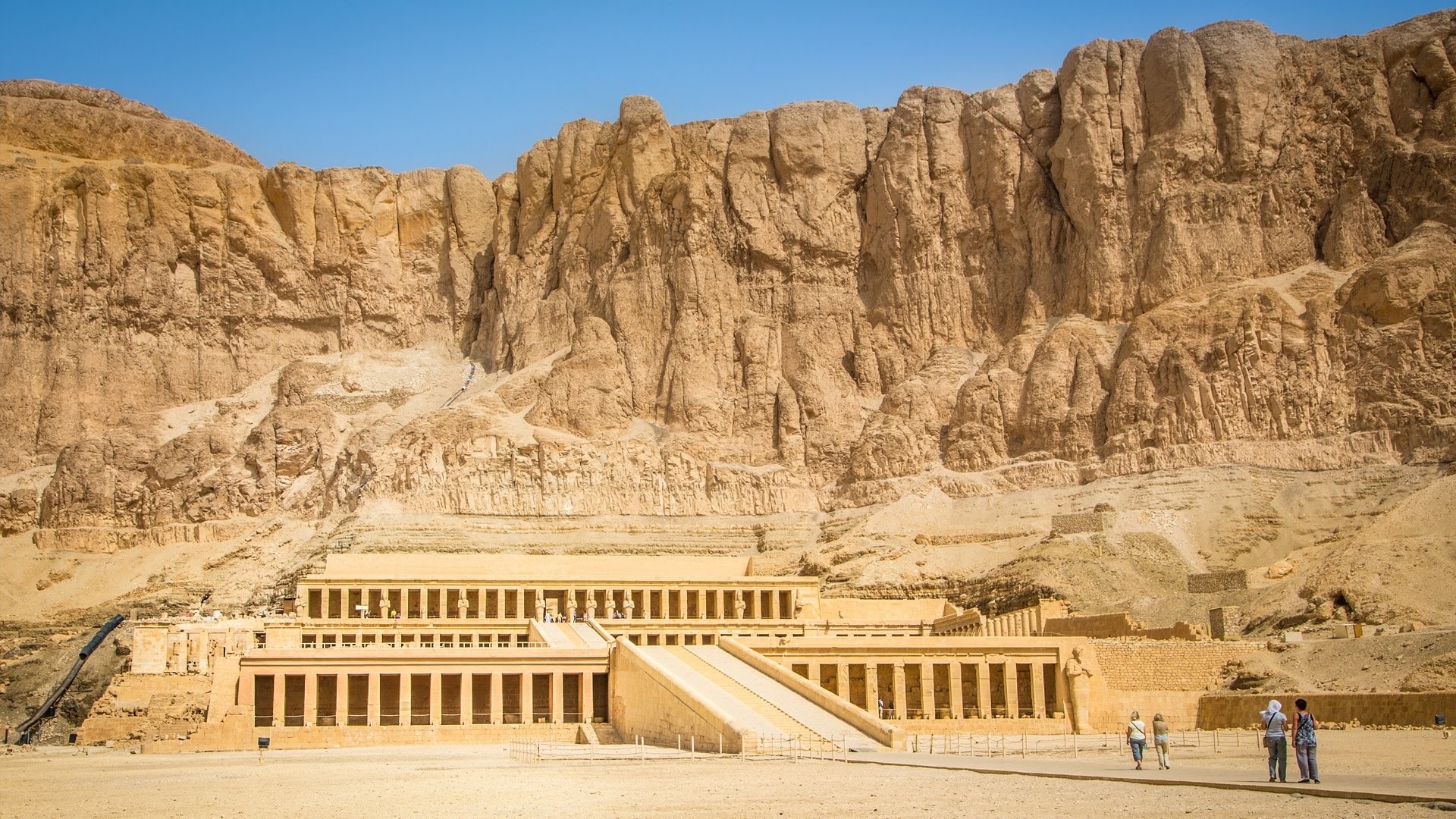
The temple is very impressive from a distance and is a great place to take photos. The name Valley of the Queens is misleading, as both male and female royals and some high officials were interred here. About 80 tombs have been identified, of which the most famous is that of Queen Nefertari. Take more photos at the Colossi of Memnon -two huge statues that are the sole legacy of the temple of Amenhotep III. Amenhotep III also built the Temple of Luxor on the east bank. The temple was dedicated to the god Amon, though inside you also find a shrine dedicated to Alexander the Great. The temple's entrance is lined with Sphinxes, and inside you find colonnades, courts, obelisks and wall murals. The mosque of Shaykh Yusuf Abu al-Hajjaj was built on top of part of the temple. You can also visit the Luxor Museum, which has interesting exhibits from the area.
The incredibly impressive Temple of Karnak is a huge complex that was dedicated to the god Amon. In the New Kingdom period, this was the most important temple is Egypt. It is probably the largest religious building ever and it can carry no less than 10 average Christian cathedrals. Some of the interesting structures within the complex are the gigantic hypostyle hall, the Kiosk of Tarhaka, statue of Ramses II, temple of Ramses III and the sacred lake. The best time to take a Nile cruise is over the cooler months of November - March. These are also the peak months and to avoid crowds, always start out early each day.
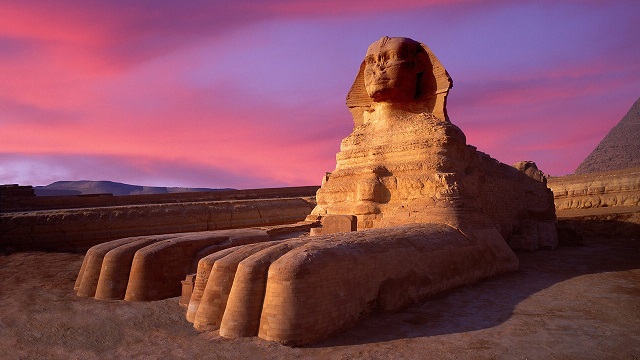
The Great Sphinx of Giza, commonly referred to as the Sphinx of Giza or just the Sphinx, is a limestone statue of a reclining sphinx, a mythical creature with the body of a lion and the head of a human. Facing directly from West to East, it stands on the Giza Plateau on the west bank of the Nile in Giza, Egypt
October, at the end the hot season is tolerable, especially when you factor in that it falls with off-season period: it is cheaper ad less crowded. When visiting the monuments, you are advised to hire a guide who will explain the historical context at each site. If you are on a Nile Cruise package, the services of a guide will usually be included. You do a lot of walking, and you need to bring along suitable shoes. Other items you ware encouraged to pack are: sunglasses and sun screen lotion. Remember also to carry bottled water and photographic film, which you can buy at the cruiser or at a bazaar. Light clothing is generally recommended though you may need a sweater and jacket for winter evenings.
Botswana UpMarket Safari Destination
Experience The Beauty And Spirituality Of Tibet
Tweet
Follow @Charlesfrize

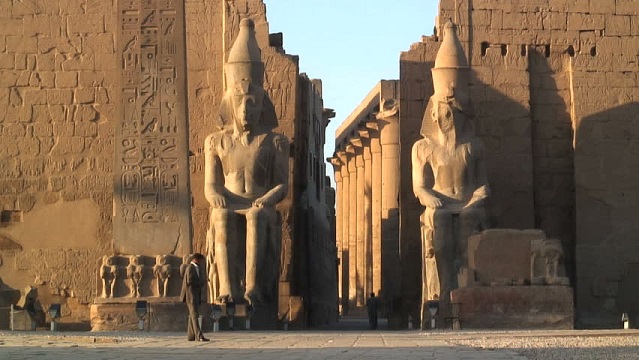






New! Comments
Have your say about what you just read! Leave a comment in the box below.